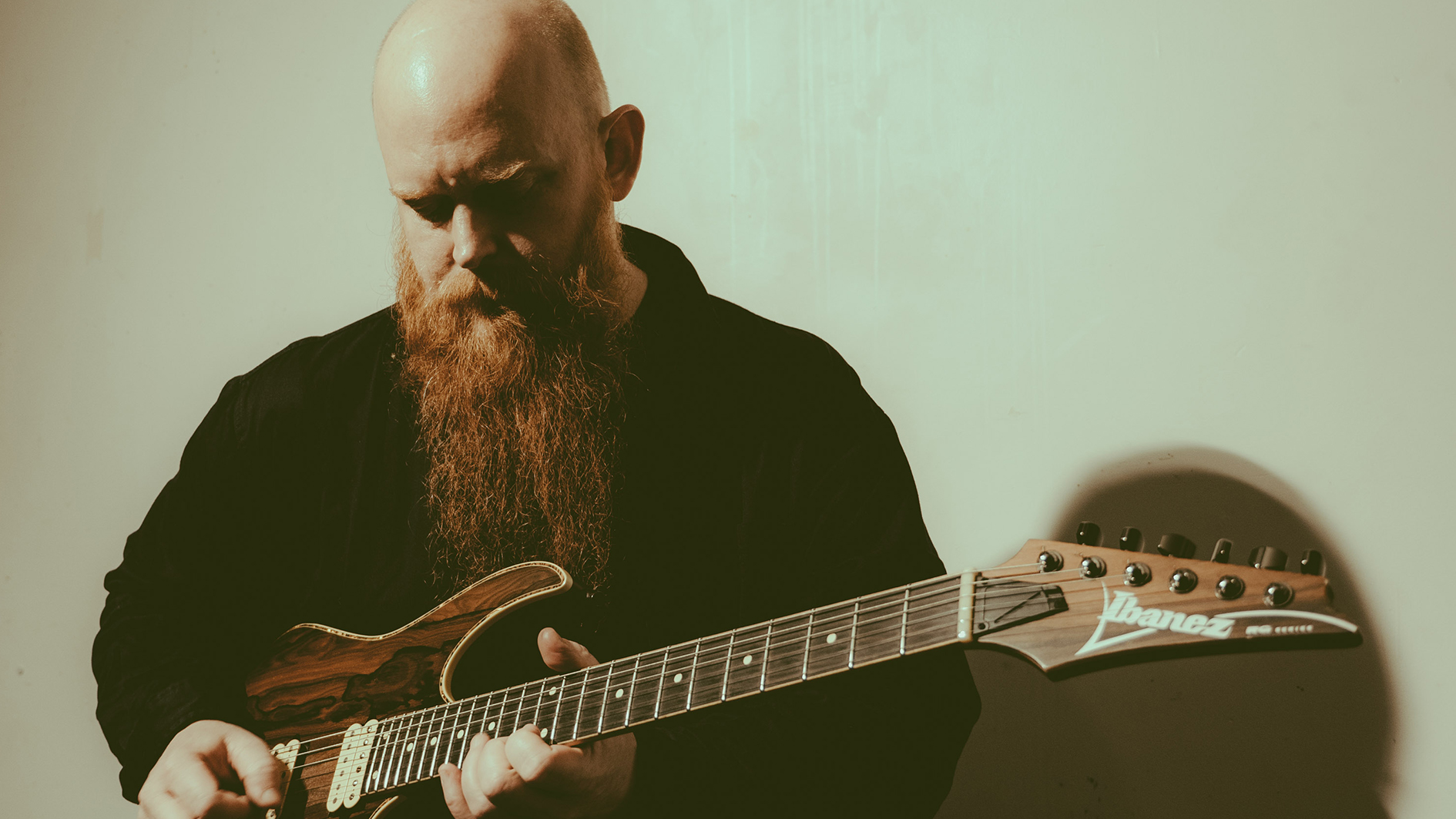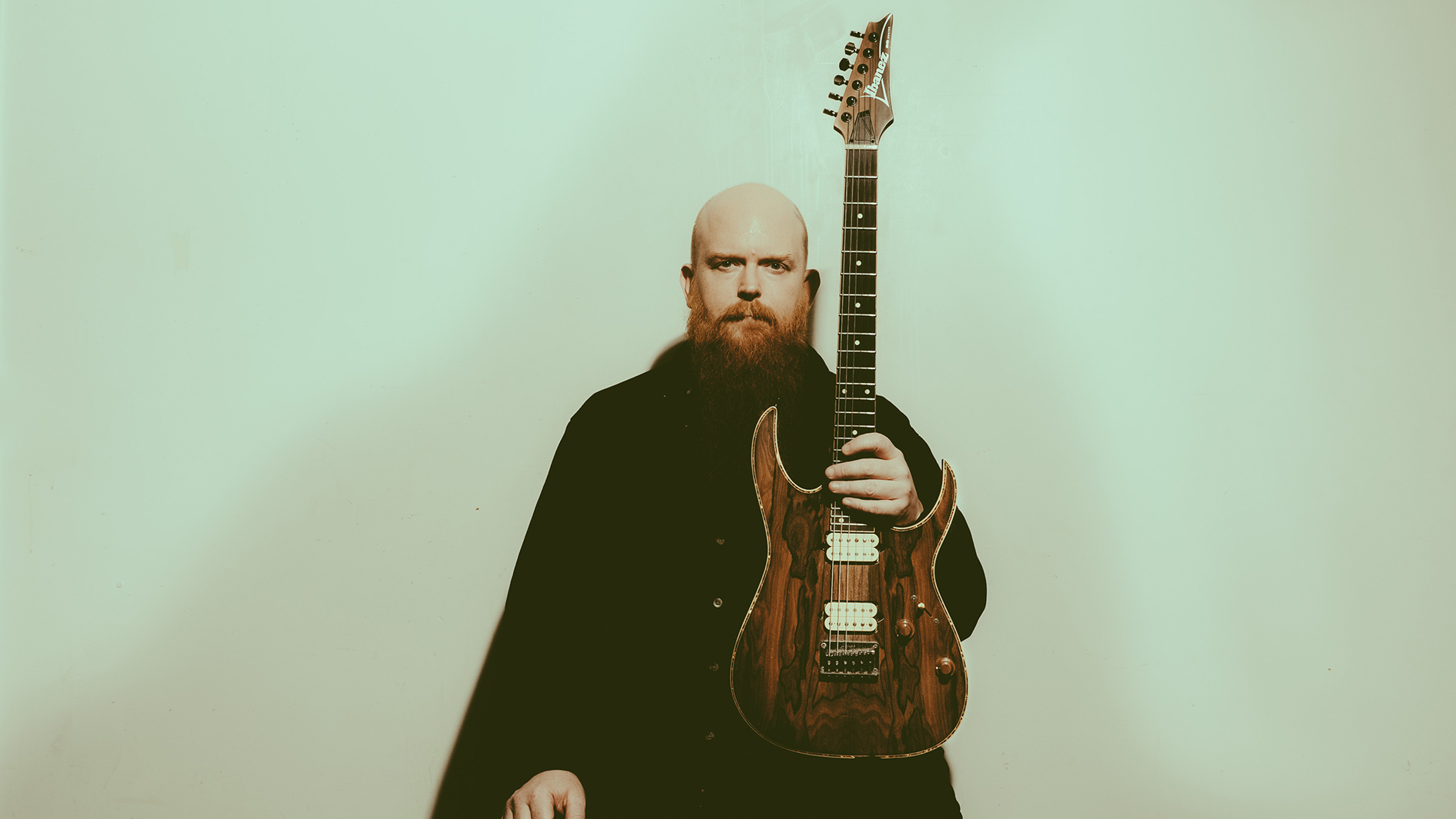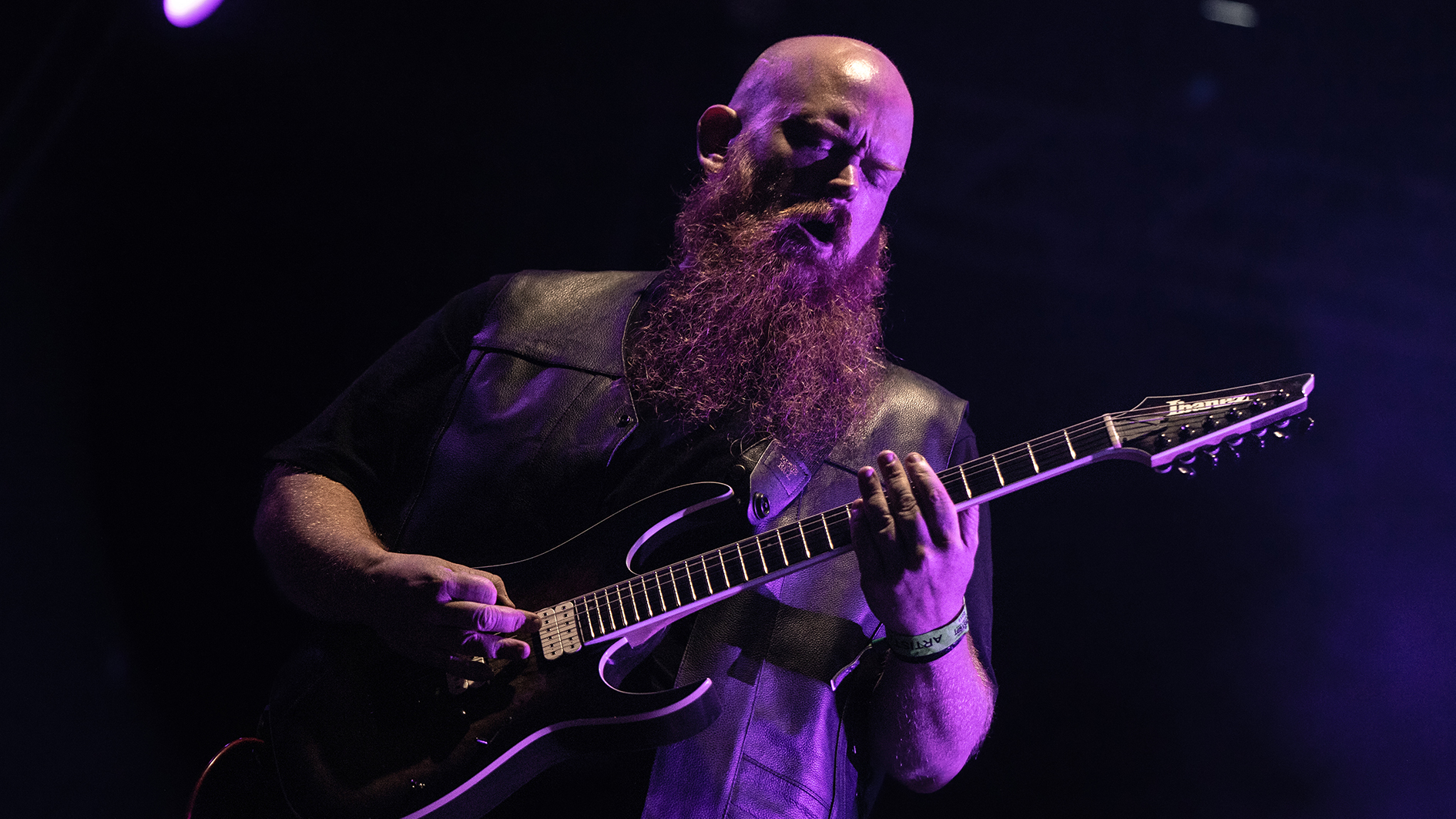Ray Suhy: "I used an Ibanez RG for a death metal tour, and a few months later I used the same guitar on a jazz album!"
The genre-fluid guitarist discusses technique crossover between two of music's most seemingly dissimilar styles

Onstage with Six Feet Under, Ray Suhy is all velocity and volume, tearing through guitar riffs destined to make ears bleed. Conversely, with his jazz quartet, it’s about clean lines and melody. Same coin, different sides, but in Suhy’s eyes, the two aren’t far apart.
Transcendent is the second release from the Ray Suhy/Lewis Porter Quartet and the follow-up to 2018’s Longing. Suhy and jazz pianist/historian/author Porter are joined by bassist Brad Jones (Ornette Coleman, Elvin Jones) and drummer Rudy Royston (Bill Frisell, Ravi Coltrane) - a gathering of virtuosos who spent six hours in the studio, with no rehearsals, one or two takes per track, and little to no overdubbing. The result is superb.
Ray Suhy grew up in Biddeford, Maine, where he was weaned on classic rock and ’70s music from his mother’s record collection. He played bass in school bands and soon took up guitar, teaching himself through tab books.
By the time he enrolled at Berklee College of Music, his tastes had expanded to include jazz - John Coltrane, Miles Davis, and George Benson were his new vocabulary. After Berklee, he spent several years studying with renowned jazz pianist and educator Charlie Banacos.
He was working at a guitar store in Maine when he met jazz saxophonist Allen Lowe. The two bonded over their love of jazz, and soon Lowe began hiring Suhy for recording sessions in New York, where he met and immediately connected with Lewis Porter.
Suhy’s resume is diverse and includes Cannabis Corpse, The Baltic Sea, and East Of The Wall. This year will see a new Six Feet Under album and tour, new music from Gematria, his experimental rock duo with guitarist Steve Honoshowsky, and dates with the Quartet in support of Transcendent.
How does Transcendent pick up where Longing left off?
All the latest guitar news, interviews, lessons, reviews, deals and more, direct to your inbox!
"Longing was the first jazz record I made with my songs and Lewis Porter’s songs. I had a vision for that record and I got close to it, but it was a little rough around the edges. It didn't really get to where I wanted to go. We put that record out, played a couple of shows, and then I was off in the metal world, traveling and touring for a bit.
John Coltrane is a huge influence in my life. The drive and the spirit in his music are always a force in my creativity
"I kept the idea of doing another record in the back of my mind, and when all the schedules aligned again, I started writing. I wanted this record to be a little more cohesive, and stronger emotionally and mood-wise. Longing was a bit more raucous and aggressive, and I wanted Transcendent to have more feeling to it. I wrote, I think, thirteen pieces, of which we used six, and Louis has three songs on the record as well."
What do you mean by “rough around the edges”?
"My main goal is always to have an expressive sound and spiritual feeling in the music that takes you somewhere, and it just didn't quite get there on Longing.
"John Coltrane is a huge influence in my life. The drive and the spirit in his music are always a force in my creativity, so when we were going to do this record, I wanted to hone that in a little more. And honestly, I had to do some work on my playing, from the last record to this one, to get the sounds I wanted. I still work on that, but I got a little closer on Transcendent."
What did you do to get your playing to the level that you thought was lacking?
"I'm always searching for new things to add my playing. I try to learn something new every day. That's a big part of who I am and how I've made my life work. I need to practice every day and try to discover new things.

"It's hard to explain, but my playing on Longing didn't feel concise to me. It didn't feel all the way together. I work on technique, melody, harmony, and all that stuff, but it wasn't at the expressive level that I wanted it to be, so I had to scale things back a bit and work on staying more in a rhythmic flow and keeping everything tightly knit together while still feeling free.
"I want my music to always be melodic. I want there to be little hooks for the listeners, even in the improvisations. I don't want it to be so note-y all the time that there's nothing for the listener to latch onto. I feel like I did that a little too much on the last record. So, on Transcendent, I wanted to balance the more intense moments with some melodic moments in my playing.
Being aware of the story I was telling in my solos - that's another thing I thought was lacking before
"That's what I worked on mostly, and just being aware and in the moment, because sometimes when you're playing music, you can get distracted and think about other things, and your ego can kick in and be like, 'Oh, you have to play something impressive here.'
"When that happens, you almost always lose the point of what you're trying to accomplish, and you almost always get out of sync with the band. So it was working on staying in the moment, and also being aware of story I was telling in my solos. That's another thing I thought was lacking before."
Tell us about your gear on this project and with Six Feet Under.
"When people think about jazz guitar, they’re probably thinking about hollow bodies or semi-hollow bodies, which I do love and will probably play again at some point. But, for me, it’s not about that, as long as I can get the sound that I want.
"On Transcendent I used an Ibanez RG, an exotic wood model, and a few months before that, I was in Europe playing death metal with Six Feet Under using that same guitar, just with a different setup.
"I don't have a ton of guitars. I have four Ibanezes that I play, and that's pretty much it. I tried a lot of guitars over the years and something just didn’t feel right. I couldn’t get certain sounds out of them. Two years ago I was at NAMM, I picked up an Ibanez, played it, and it was like, 'What am I doing here?' The neck, the way they play, and for my style and the way I pick, everything felt so natural and much more comfortable.
"I talked to the rep, he hooked up a guitar for me, and I actually ended up buying a couple others on my own. I love them. They make doing what I do just that much easier. I like the mahogany bodies a lot. That's my favorite tonewood. And I really like the jumbo frets. They’re crucial to what I do as well.
"I use DiMarzio pickups, the Air Norton and Tone Zone. I used active pickups for a long time, and when I switched back to passives, once again I said to myself, 'What have I been doing?' Passive pickups have such a more natural attack and a more woody tone that really helps when I'm playing clean tones or lead tones or crazy metal sounds. So I'm really enjoying the DiMarzios.
I keep things pretty simple on my board. In Six Feet, I use four or five pedals, and on jazz stuff, maybe four
"My strings are Jim Dunlop. With Six Feet Under, I use 11 to 54’s, a custom set they make for me, and when I play jazz or rock or blues, I use 10 to 46.
"On Transcendent, I used a Fender Deluxe that they had at the studio. At home I use a Mesa Boogie Mark V 25 combo."
What’s on your pedalboard?
"I use an Eventide H9 in Six Feet Under and on the jazz stuff for delay and reverb and lead boost, things like that. I use a Maxon OD808, a Fulltone Full-Drive 2 - that’s the sound on Transcendent, really, the Full-Drive going into the Deluxe.
"On the metal side, I use Fortin pedals, the Grind and the Zuul. I also use a Mesa Boogie High-Wire buffer. I keep things pretty simple on my board. It’s small, probably 14 or 16 inches wide. In Six Feet, I use four or five pedals, and on jazz stuff, maybe four."
Are there certain recording techniques that you swear by?
"Trying to find the right tone for Transcendent was tough for me. I wasn't quite happy with the sound I had on Longing, so that was a big part of everything about this new record. I wanted to get the tone a little different.
"I worked on it a little bit, but when we got to the studio, I played through the amp and I was like, 'This isn't quite what I want.' I tried to dial in a sound, but sometimes you have to make do with whatever happens in the studio, so what we recorded was pretty dark and that was probably my fault. I recorded the amp with not much treble, pretty bass-y, and my overdrive sound was pretty dark too.
"We mic'd the amp the traditional way, but unbeknownst to me, they had also taken a direct signal from my pedalboard before it hit the amp and recorded that as well, and that turned out to be a blessing in disguise. Direct guitar sounds are usually very spiky and gross, especially if there's a distortion pedal going directly into a mixing board.
I always practice the fundamentals - arpeggios, scales, triads, chordal, everything you can think of
"The guitar, before it hits the amp and the speakers, has a lot of harsh high frequencies that get tamed by the amp and the speaker. If you don't have those in play, a gross, kind of glitchy, high-end sound happens.
"When we mixed, I had this weird idea - we mixed in a little bit of the direct signal with my recorded amp sound to help brighten it up a little bit, and the direct sound had a lot of pick attack. Then I panned the guitar maybe 25 percent over to the left, and on the right I put a really bright reverb to help brighten the sound as well.
"This is not something I had in mind going into studio. This is nothing that I had planned. But when we mixed the record, I was really stoked with the sound, and that's something I'll probably continue doing in the future."

You practice for different styles of music. Is practice “practice” for you or is it specific to each genre?
"Obviously, I always practice the fundamentals - arpeggios, scales, triads, chordal, everything you can think of - to keep that going and find new ways around that stuff, and to try to find some new connections on the guitar that I haven't made yet. That's the way I operate every day.
"The right hand is very aggressive in metal. It's a hard attack, there's a lot of downpicking, there's a lot of fast tremolo picking. For that, I work on my endurance. I sit with a metronome, but it's slow-ish - 70 or 80 beats per minute - and do 16th notes.
"There's a method I discovered online: do something for five minutes, take a five-minute break, speed it up, and keep going. Depending on how my hand feels, I start at 70 or 80, and I do 16th notes, all downpicking, ramp up the metronome after five minutes, and hopefully get up to around 100 to 110.
Some of my biggest heroes are Jimi Hendrix, Albert King, and Eric Clapton. They have the best vibrato. That's super-important to me
"Soloing is pretty similar for both styles in the way I approach it. With Six Feet Under, I still throw in some jazzy arpeggios - I say 'jazzy,' but just the more exotic scales, exotic chords and arpeggios - over that stuff. The biggest difference in soloing is vibrato.
"Some of my biggest heroes are Jimi Hendrix, Albert King, and Eric Clapton. They have the best vibrato. That's super-important to me. It doesn't come out so much on the jazz side because it's a wilder sound, but it’s something I focus on heavily for Six Feet Under.
"For jazz, I'll pick a standard and work through the chord changes, try to weave my way through them, or do arpeggios and scales and try to find new pathways through that. I do a lot of transcription as well. I think that's super-crucial.
"Lately it's been a lot of Wes Montgomery and Michael Brecker, two seemingly different players, with their own colors and approaches to the instrument, and very unique voices, but at the core they're similar."

Do you see parallels between this project and your other projects? Is there a connecting thread that runs through everything you do?
"Yes. A lot of people don't understand how I could like or play both things. Music is a catharsis for me. It’s always been a way for me to get out whatever I'm feeling and express whatever I'm going through in my life. The visceral impact of metal and rock is awesome. That physical feeling is great.
"And jazz has that too. If you listen to Coltrane and Ornette and many people of that ilk, they had that same visceral quality. That energy is the thread for me. Don't get me wrong - I like nice, soft, more atmospheric things as well. But I have a hard time listening to music that doesn't have some kind of emotional purging going on in it. That cathartic release is the biggest thing for me."
Alison Richter is a seasoned journalist who interviews musicians, producers, engineers, and other industry professionals, and covers mental health issues for GuitarWorld.com. Writing credits include a wide range of publications, including GuitarWorld.com, MusicRadar.com, Bass Player, TNAG Connoisseur, Reverb, Music Industry News, Acoustic, Drummer, Guitar.com, Gearphoria, She Shreds, Guitar Girl, and Collectible Guitar.



